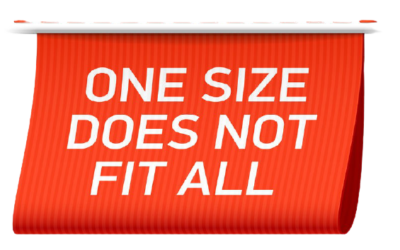As a race driver, you want to get the best results and move up on the motorsport series ladder. To do so, you might have a manager, a physio and, possibly even a lawyer. But PR, more often than not, is not high on the priority list of most drivers, and quite a few think that they don’t need it at all (check ‘I am a race driver, I don’t need PR’).
If you are one of those drivers, you should consider that today’s world is very much connected and social media is here to stay. Your next team or sponsor will expect you to have an impeccable public profile, so you can be a good ambassador for the sport or their brand.
Building a basic communication strategy is not that hard. All you need are these five steps:
1. HAVE A PLAN
This sounds simple but can be tricky because you need to define your target first and be very clear about it. What is it you want to achieve in motorsports? Is it to be in Formula One, in international sports car racing or, a national series? Do you want to make a living from your passion?
Once your target is clear, you need to establish how to communicate and to whom. If, for example, your career goal for the next couple of years is a national series, it makes no sense to send press releases to international media. If, on the other hand, your target is an international top series, you need to start building your profile on an international level as soon as possible, using all suitable communication channels.
Next comes a clear timeline. Include information like: which races are happening when? When do I send a press release and to whom? Which sponsor events are happening? How often do I post on social media?
Don’t forget to allocate time, responsibilities and, a budget. Now you have a plan.
2. PREPARE YOURSELF AND YOUR TEAM
Before you get to the top of the racing ladder, you are likely to have learned your ropes in karting or another entry series. Working with the media and the public is no different. You need to learn how to approach them best in order to connect. You don’t need to invest in an often time-consuming and expensive media training. To start with, most of the time some simple advice and common sense will do. If you belong to those people to whom talking in front of others, media included, doesn’t come naturally, rest assured. Like driving a car, it can be learned.
Also, make sure you surround yourself with the right team. Decide what you can do yourself and where you need help. Once you have your team in place and everybody knows their role, you are ready for the actual job.
3. CONNECT WITH THE PUBLIC
For me, connecting with the public is the most important step to raise your public profile. Because it is ultimately the public who will come and watch a race, follow you on social media and buy your merchandising products. It is also the public who own companies, which means that your next sponsor is hiding somewhere in this (yet untapped) pool of people.
A personal website up-to-date and filled with relevant and interesting content is a good way to start. It will also help you to streamline your priorities and how you want to be seen. Plus, it is open 24/7. Choose your social media channels wisely. Not only should you reach your target audience with them, you also need to like using them. If you don’t, find alternatives, for example a newsletter.
With all the online choices available, it is easy to forget that meeting fans or a potential sponsor cannot replace online communication. Signing an autograph or exchanging a word with a fan is likely to make them an even bigger supporter. Attending a sponsor event and speaking to invited guests about your sport will leave a lasting impression and people will talk about you in a positive way to their friends and colleagues. Like a good customer review, this is your best publicity.
Once you have a good public following and a working online presence, only then comes media work.
4. WORK WITH THE MEDIA
A journalist has a job to do, just like you. He or she is not there to write something good or bad about you, just to write. Having a good online presence means that a journalist might come across you while looking for a good story and contacts you. But more often than not, that doesn’t happen. Therefore, it will be your job (or your team’s) to create pro-active relationships with journalists in motorsports and beyond.
Some starter questions are: Do I have an up-to-date press distribution list with all relevant contacts? Do I send informative and well-written press releases (check ‘how to write a press release’)? Am I able to respond quickly and professionally to any media inquiry?
Even though today’s media landscape has changed extensively, a positive article in a respected newspaper or magazine will raise your public profile, and more importantly, your credibility. Simply, because an article is an unpaid advertisement endorsed by an independent third party. It doesn’t come better than that.
5. PREPARE FOR THE WORST
Accidents happen. As a race driver, you know that better than anybody. But I don’t just mean accidents on-track. There is a lot that can go wrong off-track as well. A crisis can (and will!) come in any form or shape and can hit anybody. For example, you post a tweet that provokes an unexpected negative reaction or a newspaper picks up on a comment you made and turns it into something you didn’t mean to say. The list is endless but the good news is that it is possible to prepare for a crisis. It is difficult to prevent one but when you come prepared, the negative news can be contained. You can read more about how to announce bad news in a good way here.
How many of those five steps have you already covered in your daily communication strategy?






